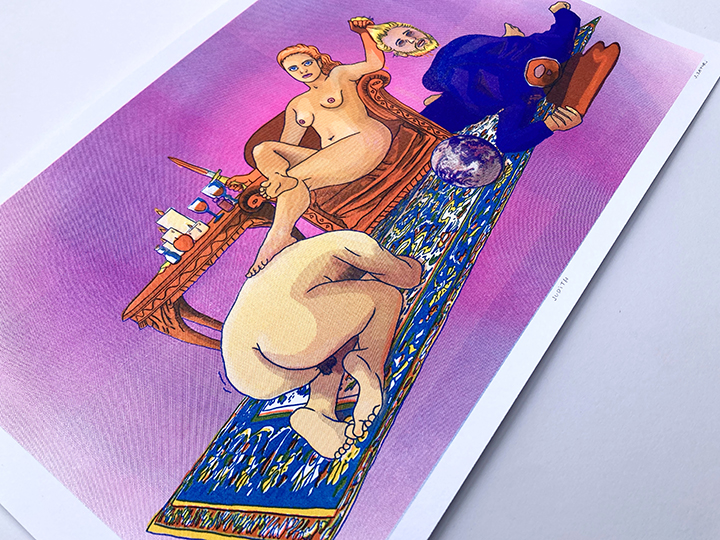My recent risograph print, Judith is inspired by this Old Testament tale of Judith and Holofernes. Alight with indomitable strength Judith saves her town of Bethulia. She seduces the formidable Assyrian general,Holofernes, and in his drunken state, Judith lays a sword to his neck. In gruesome detail, this story is told over and over again in art history embodies feminine strength and resilience. Artists like Artemisia Gentileschi, Caravaggio, and Kehinde Wiley have reimagined the tale of Judith and Holofernes.
Feminist Risograph Print for Sale
Here is my third edition risograph print of Judith. This vibrant risograph print celebrates the strength of femininity. Embrace empowerment and adorn your surroundings with this distinctive feminist artwork.
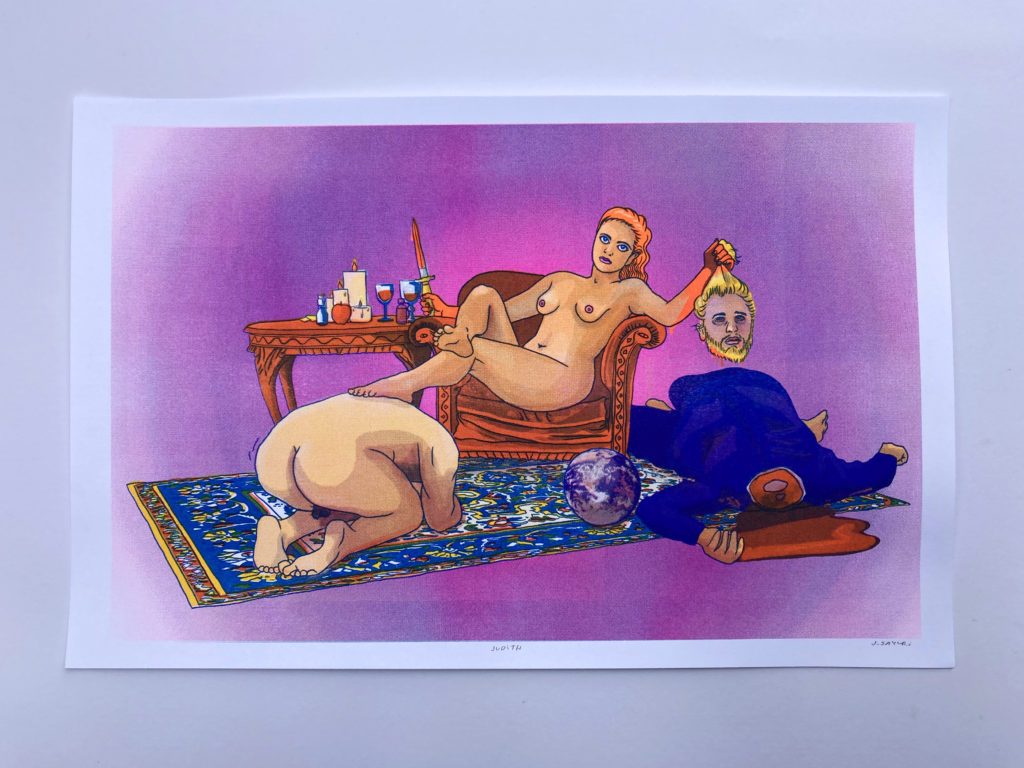
Learn about what makes risograph prints so awesome!
Here is the process of risograph printing of my previous 3 print editions.
See more prints and wall are on my Etsy store, TinyPinkShoe.
Judith and Holofernes is a Biblical Tale
The Old Testament story of Judith and Holofernes is a tale of bravery and cunning found in the Book of Judith. Judith – a wise widow dresses in her finest attire, goes to the Assyrian camp, and seduces Holofernes. Gaining his trust and taking advantage of his inebriation, she beheads him with his own sword. Judith then returns to her people in Bethulia the severed head and the Assyrian army retreats in shock and disarray. Judith saves her city and becomes a heroine and symbol of courage.
Feminist Art
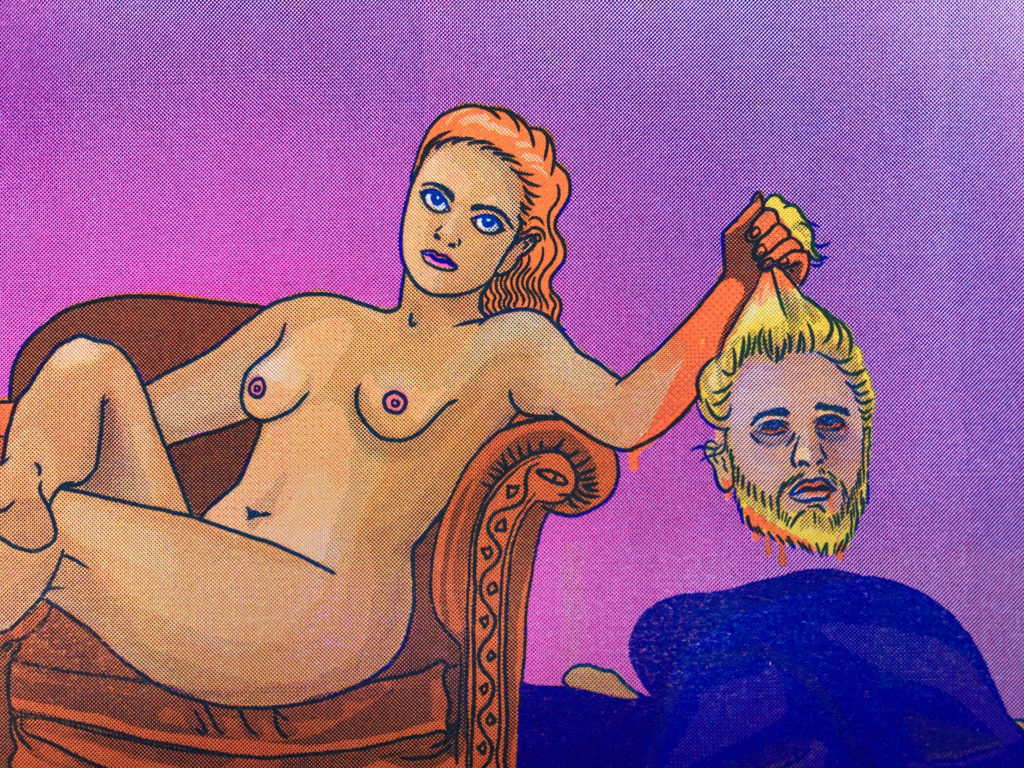
In the context of the Women of Power fine art movement, which emerged in the late 19th and early 20th centuries, artists drew inspiration from the biblical story of Judith and Holofernes to create empowering and feminist representations of women. The movement aimed to challenge traditional gender roles and celebrate women’s strength, resilience, and agency.
Artists within the Women of Power movement often depicted Judith as a symbol of female empowerment and resistance against oppressive forces. The story of Judith, with its themes of courage and strategic thinking, resonated with feminist artists who sought to redefine the narrative around women in art. Judith became an iconic figure, embodying the idea that women could be both powerful and virtuous.
Artworks from the Women of Power movement often showcased Judith in heroic poses, emphasizing her triumph over Holofernes as a metaphor for women overcoming societal challenges. These representations challenged the traditional portrayal of women in art as passive and submissive, offering a new perspective that celebrated female strength and autonomy.
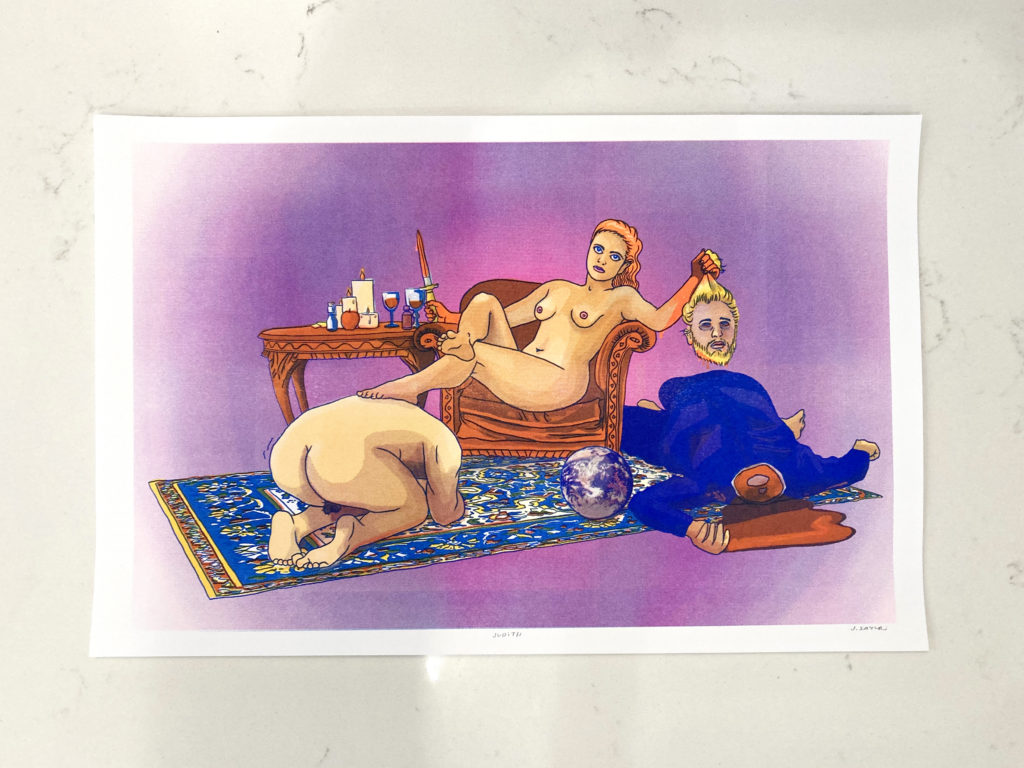
In summary, the biblical narrative of Judith and Holofernes tells a story of a woman’s clever strategy and bravery in saving her people. In the Women of Power fine art movement, this narrative became a powerful symbol for feminist artists, inspiring them to create empowering depictions of women asserting their strength and agency in the face of adversity.
Here are the best examples of Judith and Holofernes in art history:
5 Best Judith and Holofernes Art
Lucas Cranach the Elder – Judith with the Head of Holofernes (c. 1530)

Lucas Cranach the Elder’s “Judith with the Head of Holofernes” (c. 1530) is a Renaissance masterpiece that captures the essence of this biblical tale. Judith stands composed, holding the severed head of Holofernes with a sense of determination. I love the meticulous attention to detail in the rich fabrics, delicate jewels, and expression on Judith’s face. The composition of this painting finds a delicate balance between grace and strength.
Caravaggio – Judith Beheading Holofernes (1598–1599)

Caravaggio’s “Judith Beheading Holofernes” (1598–1599) is Baroque masterpiece that encapsulates the artist’s revolutionary approach to light and shadow. In this visceral portrayal, Caravaggio plunges the scene into darkness, dramatically illuminating Judith’s determined face and the gruesome act of beheading. The intense chiaroscuro and naturalism intensify the emotional impact, creating a stark contrast between light and darkness.
Caravaggio’s tumultuous life, marked by a blend of brilliance and controversy, mirrored his art. His innovative use of light and realism in Judith Beheading Holofernes remains a testament to his lasting influence in art history.
Artemisia Gentileschi – Judith Slaying Holofernes (1614-1620)
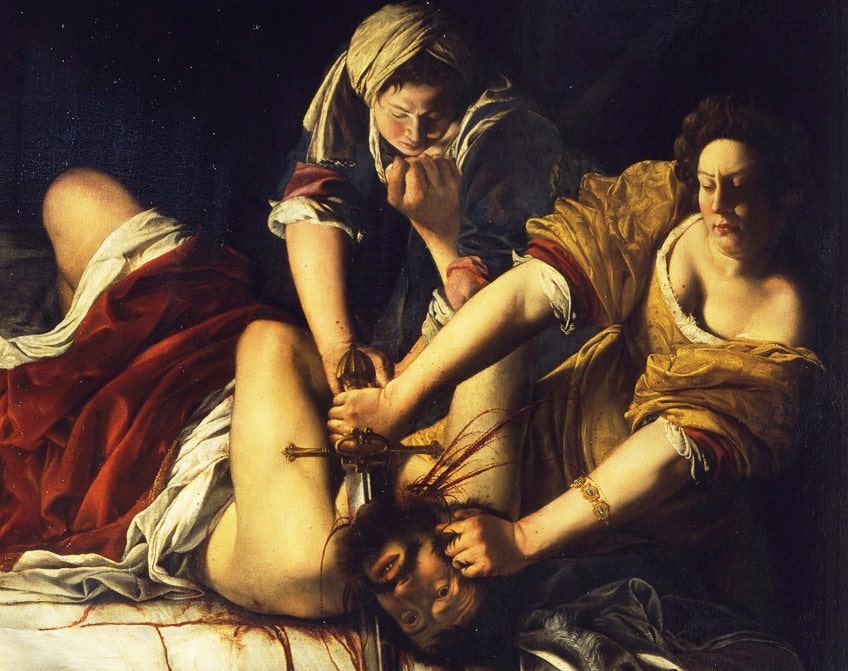
Artemisia Gentileschi’s “Judith Slaying Holofernes” (1614-1620) reflects the artist’s unique perspective as a woman in a male-dominated art world. In this visceral depiction, Judith, fueled by determination, gruesomely beheads Holofernes with her maid’s assistance. Gentileschi’s dramatic use of light intensifies the scene’s emotional impact, while the powerful portrayal of female strength and resilience.
A survivor of personal trials, including a highly publicized rape trial, Gentileschi’s life experiences undoubtedly influenced her dynamic and empowering artistic expression. This painting is a testament to her significant contribution to Baroque art and feminist narratives.
Gustav Klimt – Judith I (1901)

Gustav Klimt’s “Judith I” (1901) is a mesmerizing symbolist masterpiece of the Austrian artist’s distinct Art Nouveau style. In this evocative portrayal, Judith exudes both strength and sensuality, adorned in golden patterns reminiscent of Klimt’s signature gilded ornamentation. The detailed decorative elements and intricate symbolism showcase Klimt’s fascination with Byzantine and Egyptian art.
As a leading figure in the Vienna Secession movement, Klimt’s work often explored themes of love, sexuality, and the feminine mystique. “Judith I” exemplifies his groundbreaking approach to symbolism and enduring influence on turn-of-the-century art.
Kehinde Wiley – Judith and Holofernes (2012)

Kehinde Wiley’s “Judith and Holofernes” (2012) is a contemporary reimagining of the biblical narrative. Wiley places a Black woman at the center of power, subverting traditional Eurocentric representations of Judith. His characteristic use of vibrant colors and intricate patterns adds a contemporary twist to this historical tale.
As a prominent figure in contemporary art, Wiley challenges Eurocentric conventions, emphasizing the strength and agency of Black subjects. “Judith and Holofernes” exemplifies Wiley’s commitment to redefining art historical narratives through his distinctive visual language – making a bold statement on race, gender, and representation.
Judith and Holofernes Risograph Print
